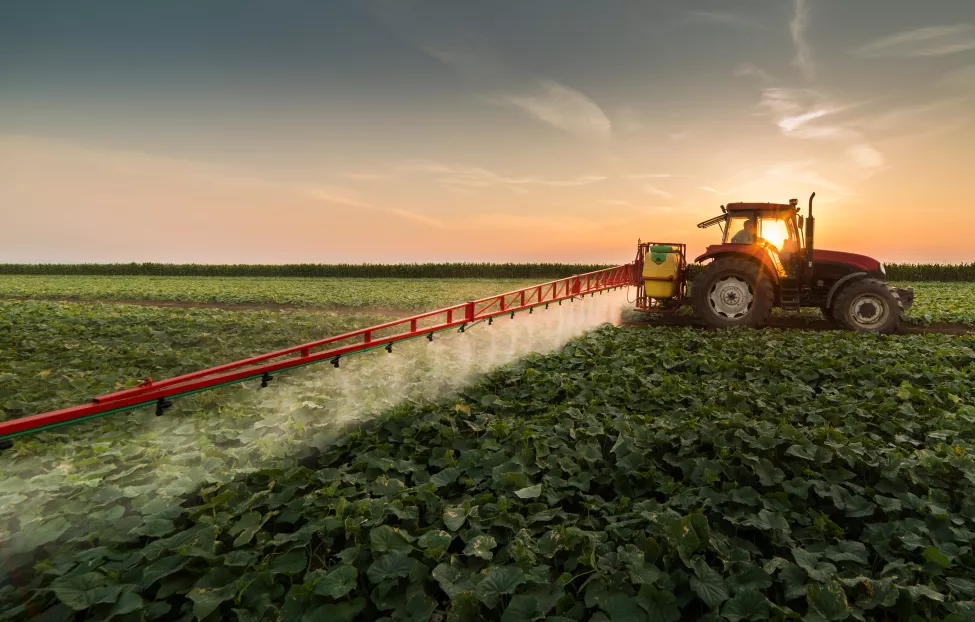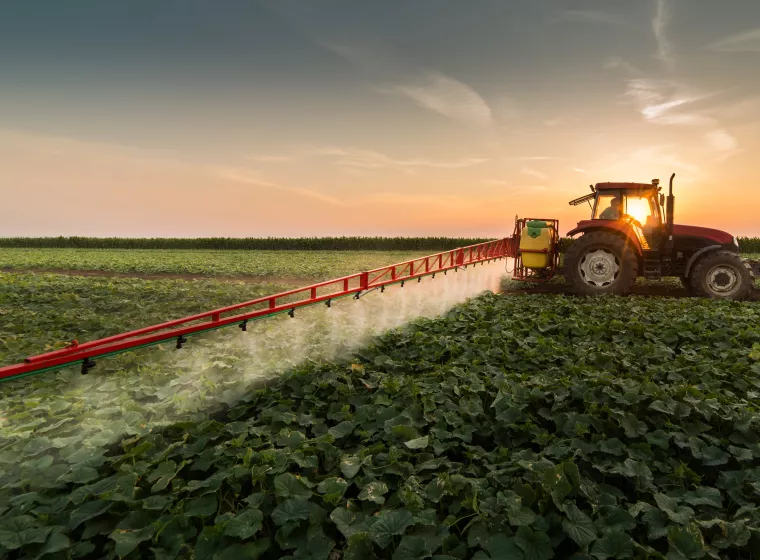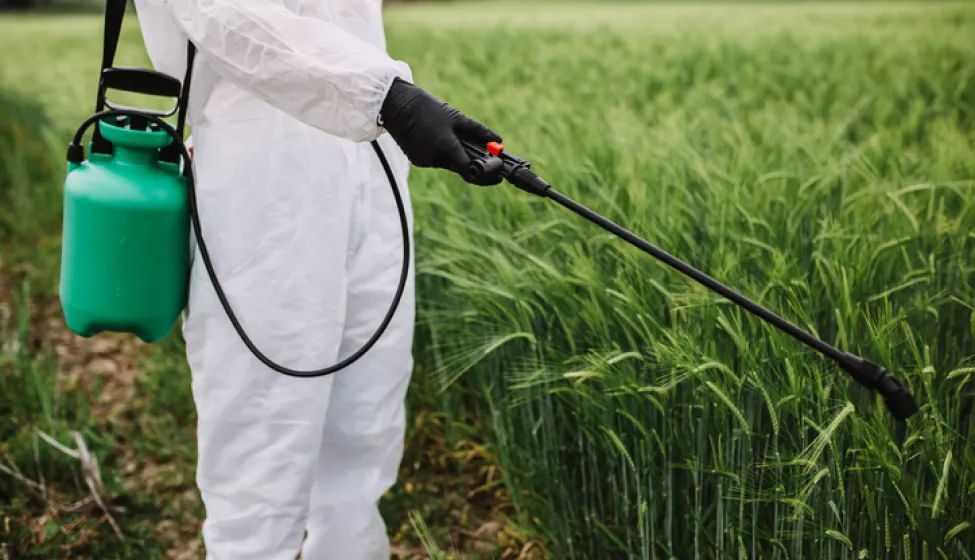February 22, 2024
Adopting RNAi and advanced plant protection technologies in a shifting regulatory environment
Agricultural producers around the world are facing increased pressure to shift toward greener practices and processes. In the EU, the Sustainable Use Regulation, which proposed cutting pesticide use by 50%, was recently withdrawn. However, high-profile studies and polls continue to push the industry toward biopesticides.
In this environment, there are opportunities for pesticide manufacturers and agricultural producers to consider the role that advances in biotechnologies — including biopesticides such as microbial consortia, peptides, bacteriophages, and RNA interference (RNAi) — could play in their overall product strategy. Europe currently holds a sizeable 30% share in the $6 billion global biopesticide market, which is projected to more than double in the next five years.
However, proving the viability of novel products without readily available guidelines, historical data, or standardized protocols for establishing safety and efficacy poses high barriers to regulatory approval — requiring deep familiarity with existing regulatory requirements, approximate research strategies, and literature and data reviews to substantiate the use of new biotechnology products.
Innovation in biopesticide technologies
Biopesticides in Europe generally encompass four primary categories: microbials (bacteria, fungi, protozoa, viruses), plant extracts (botanicals), semiochemicals (pheromones), and novel alternative modalities like RNAi and peptides. While existing biopesticides belong to the first three categories, solutions based on RNAi molecules and peptides are still in development.
RNAi, a naturally occurring cellular process regulating protein synthesis, functions by blocking mRNA translation, hindering protein production in targeted pests. Peptides, short chains of amino acids, can also target crop pests and weeds. These technologies offer high potential for specificity, rapid breakdown, and efficacy in plant protection. Leveraging bacteriophage cocktails and microbial consortia can also improve efficacy and deter resistance development by pathogens.
Despite the possibilities of these new plant protection technologies, solutions (e.g., regulatory guidance) are lacking in the EU for RNAi molecules and peptides. Moreover, as of this year, no bacteriophage or microbial consortia-based active substances have been approved in the EU or UK.

Regulatory challenges
Shifting regulatory frameworks
The EU's current regulatory frameworks were developed for chemical pesticides and do not account for the specific characteristics and modes of action of innovative biotechnologies. For example, despite being biomolecules, RNAi and peptide products must adhere to the existing registration standards for conventional chemical pesticides even though they do not work the same way.
Moreover, until 2022, the EU followed a strain-centric approval system for microorganisms, demanding separate registrations for each component within bacteriophage cocktails or microbial consortia. This approach, in addition to being laborious and costly, did not accurately represent the way these technologies are used in biopesticides.
Recent modifications to EU regulations (Part B of Regulation (EC) No. 283/2013) mark a positive shift in regulatory trends by permitting potential approval of microbial consortia and acknowledging the need to accommodate and embrace advances in formulations that contain microorganisms within regulatory frameworks. This could mean that agrochemical manufacturers may soon be using microbial consortia-based active substances in biopesticide products.
Aligning data generation and risk assessment strategies
Despite some improvements, the innovative nature of biopesticide technologies means that the European guidelines and standardized protocols needed to generate the right data and demonstrate safety and efficacy for biopesticides are currently limited. Thus, to approach regulatory approval, applicants need to adapt existing protocols and risk assessment methodologies that were historically developed for chemical pesticides in the context of microbial consortia. For example, applicants have identified the need to adapt the current guidance to be suitable for testing and assessing the risk of microbial pesticides to bees.
There is a growing openness to streamlining procedures for novel plant protection technologies while maintaining safety standards.
Navigating regulations: collaborative approaches between agrochemical manufacturers and experts
Technical and regulatory alignment
Plant protection product manufacturers and agricultural producers stand to benefit from bringing together a deep understanding of modern, sophisticated techniques in molecular biology, genetics, and bioinformatics and regulatory frameworks to successfully register these innovative biopesticides.
For example, unequivocal identification and characterization of microbial strains is a regulatory requirement for demonstrating the lack of pathogenicity and robust risk assessment approaches for the microorganisms used in biopesticides. This requires a good understanding of microbial physiology, as well as molecular and genomic technologies such as marker gene-based phylogenetic assessment or whole genome sequencing.
Moreover, ensuring the specificity of the double-stranded RNAi (dsRNAi) is key to demonstrating the lack of non-target effects of RNAi molecules. This may be aided by using bioinformatic tools to optimize dsRNA sequences, eliminating homology to similar sequences in close relatives of the target pest.
Early engagement with regulatory authorities
There is a growing openness to streamlining procedures for novel plant protection technologies while maintaining safety standards. For example, recent modifications to the EU microbial pesticide registration requirements illustrate this trend, and the EU funded project Risk AssessmenT InnOvatioN for low-risk pesticides (RATION), with a planned completion date of 2026, aims to develop risk assessment schemes and tools for novel pesticides.
Some EU Member States are also starting to consider how existing standards might be applied to new biopesticides. Dutch authorities (Ctgb) recently addressed the lack of specific guidance for novel technologies in plant protection products in their Evaluation Manual for Biopesticides, which stressed the importance of leveraging insights from other regulatory frameworks and initiating discussions early in the application process. Proactive dialogue like this can help ensure a given methodology is aligned to regulatory needs, reducing delays, facilitating smoother evaluations, and potentially helping pioneer innovative plant protection solutions in the European market.
The future of biopesticides
Biopesticides are projected to play a key role in the plant protection product market, offering opportunities for growth and differentiation in the agricultural sector driven by biotechnological advancements and more favorable policies. However, securing their regulatory approval in Europe still presents regulatory challenges. Overcoming these hurdles requires collaboration with experts, early engagement with regulators, adapting methodologies, and leveraging insights from other regulatory jurisdictions.
What Can We Help You Solve?
Exponent's experts merge technical proficiency in microbiology, molecular biology, genetics, and bioinformatics with regulatory insight to support novel biopesticide registrations in Europe. Offering tailored data generation strategies, we excel in preparing high-quality application dossiers and engaging with regulatory authorities throughout the registration process, facilitating the introduction of innovative biopesticide solutions into European markets.
![Ag-Chem in the EU [CRFS]](/sites/default/files/styles/cards_home_card/public/media/images/GettyImages-1201461261_0.jpg.webp?itok=gb-8A2yQ)
Pesticides
Address the potential toxicity of pesticides with regulatory guideline-based studies and best practices.

Environmental & Regulatory Compliance
Rigorous analyses to help clients overcome complex environmental and regulatory hurdles and meet auditing obligations.

Agrochemicals & Pesticides
Navigate complex requirements for agrochemicals and pesticides in Europe and North America.

Human Health Risk Assessments for Plant Protection Products, Biocides & Chemicals Under REACH Regulations
Regulatory assessment and modeling for plant protection products, biocides, and chemicals under REACH.

Biocides in Europe
Full product lifecycle strategy support, specializing in active substances.

Biopesticides & Biocontrol Agents
Technical and regulatory support to address a range of biopesticide and biocontrol agent registration challenges.




